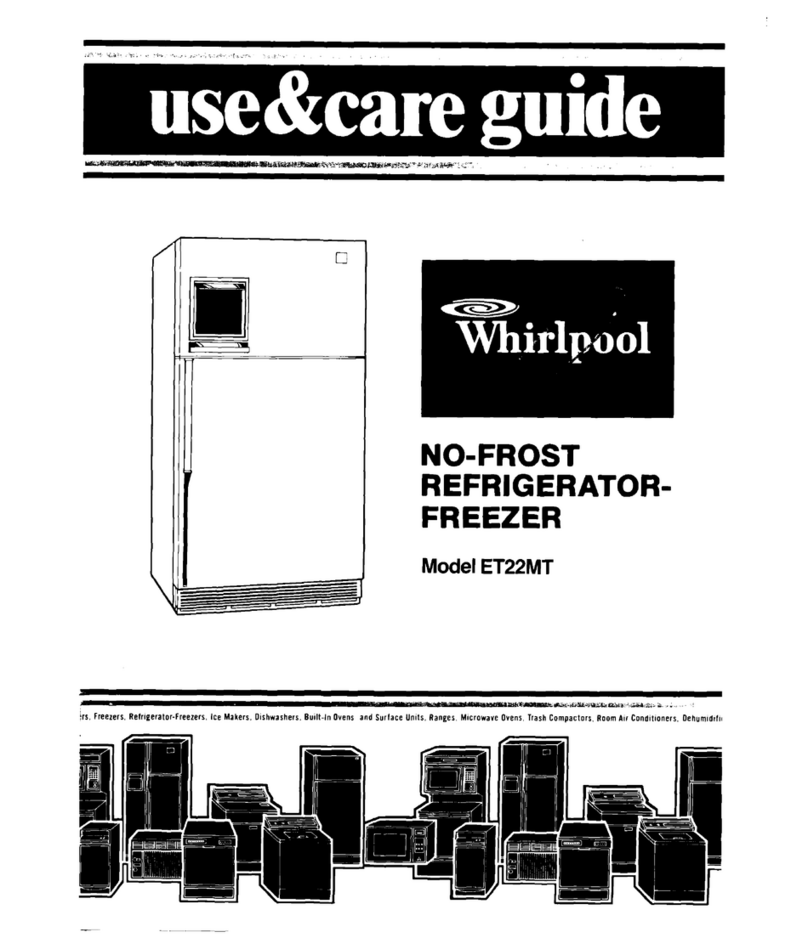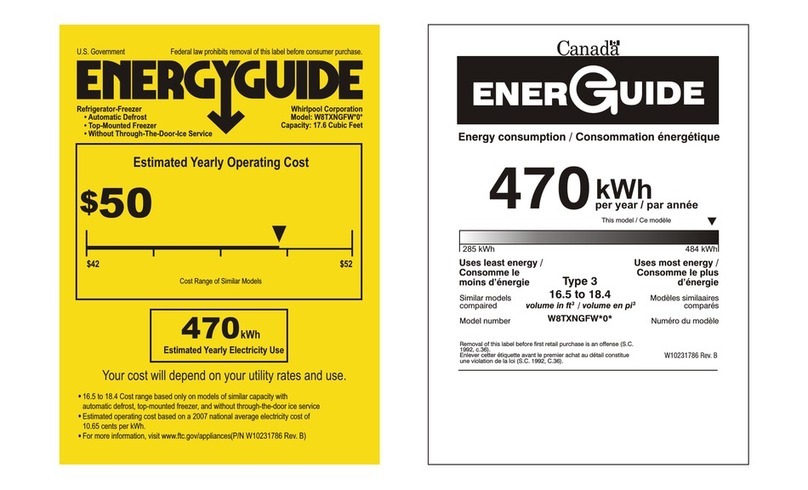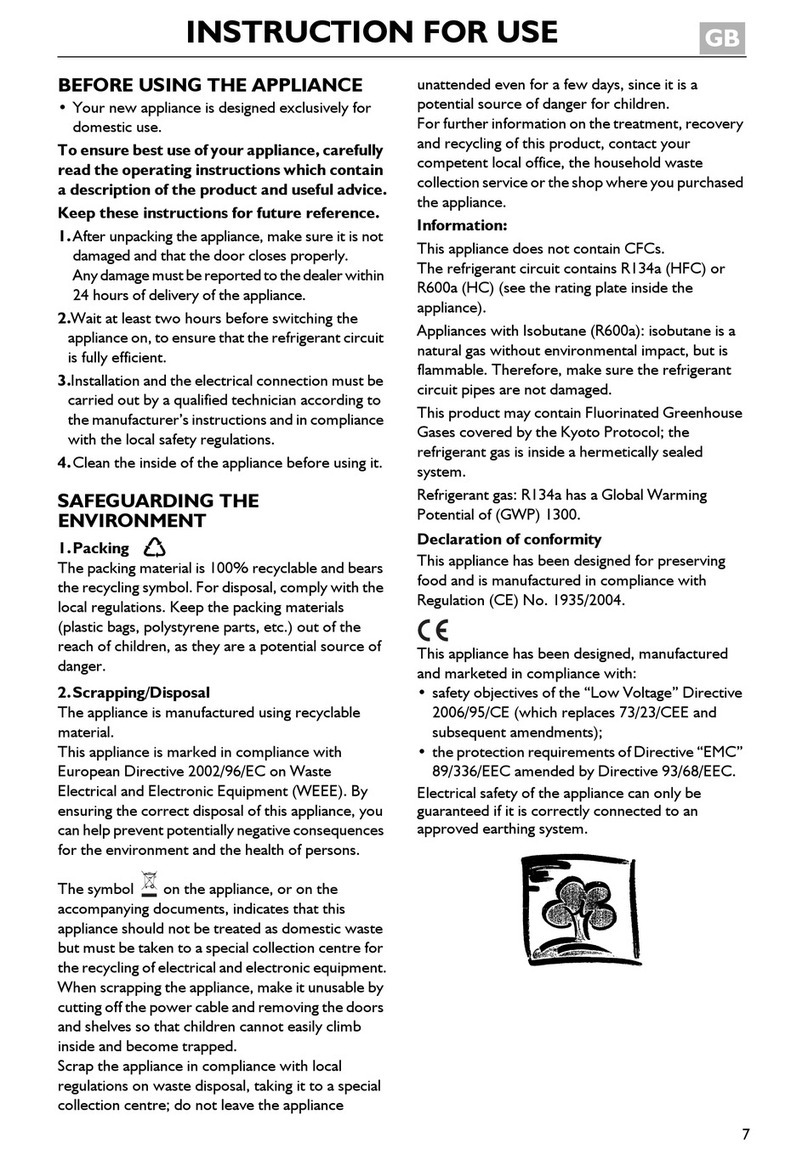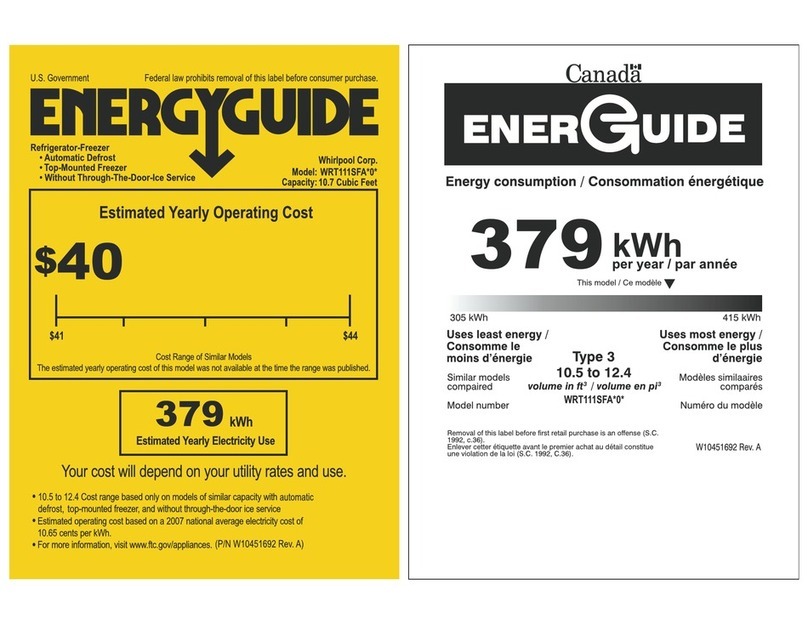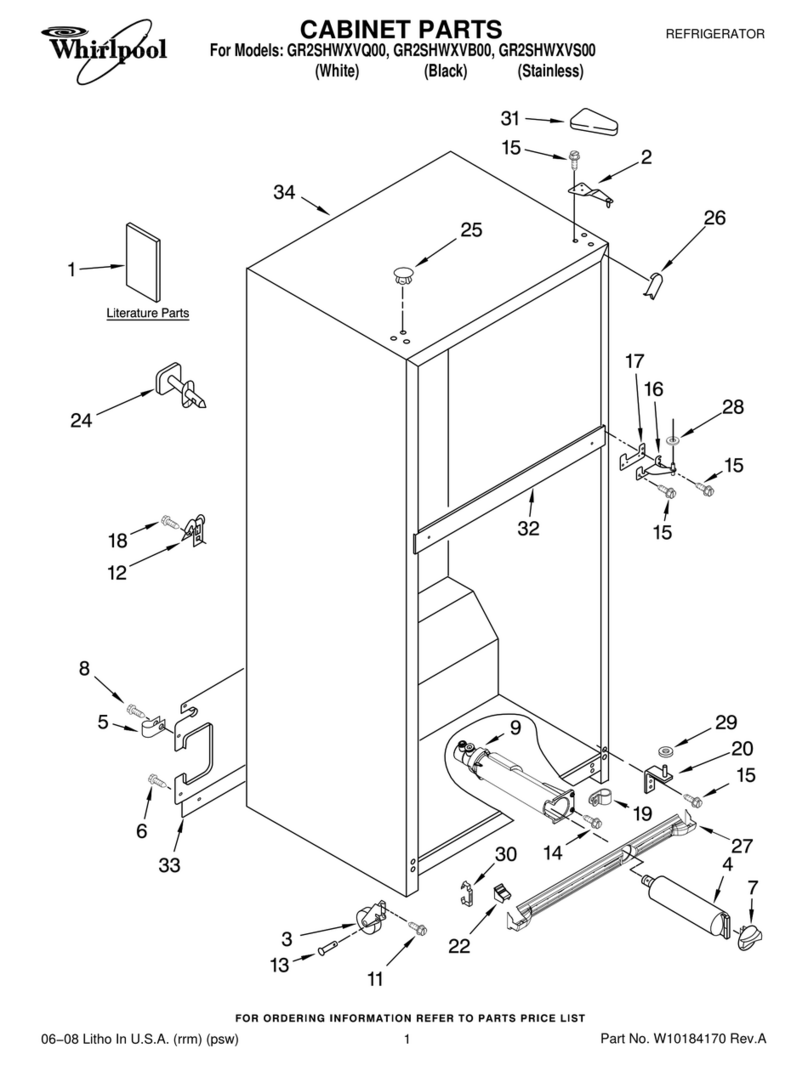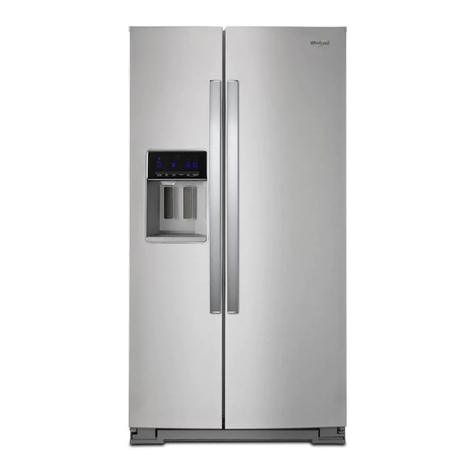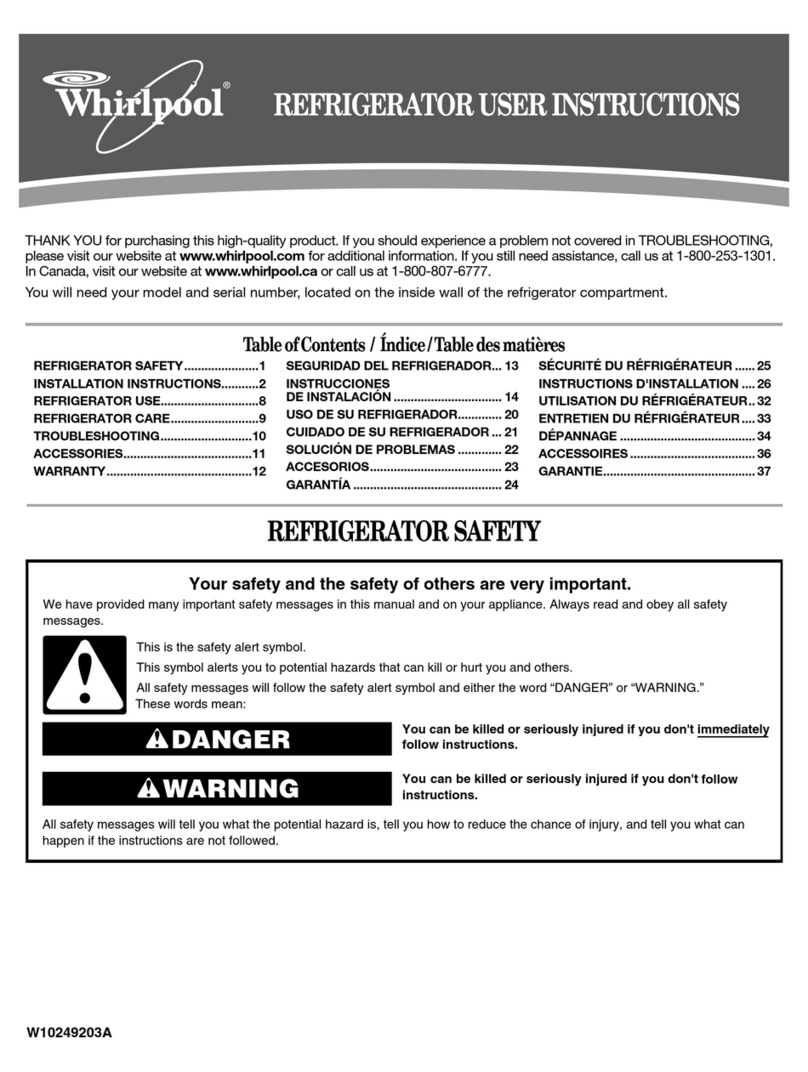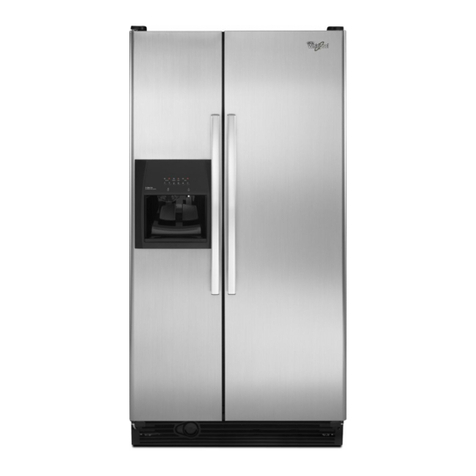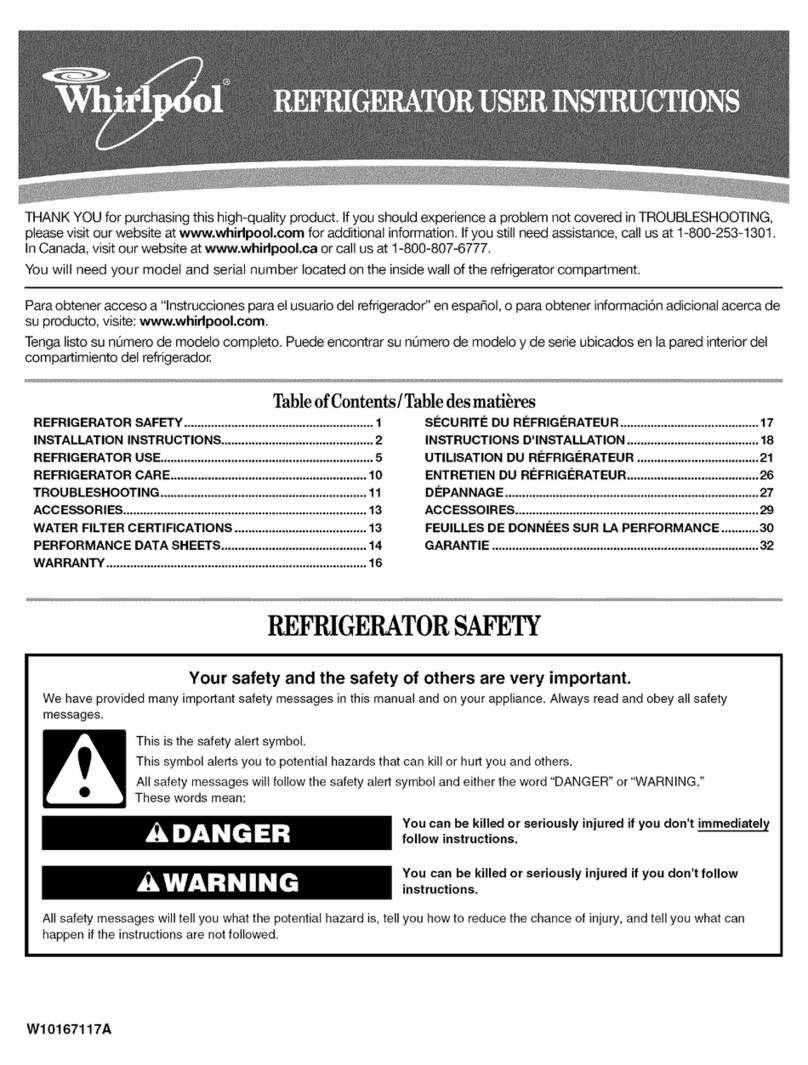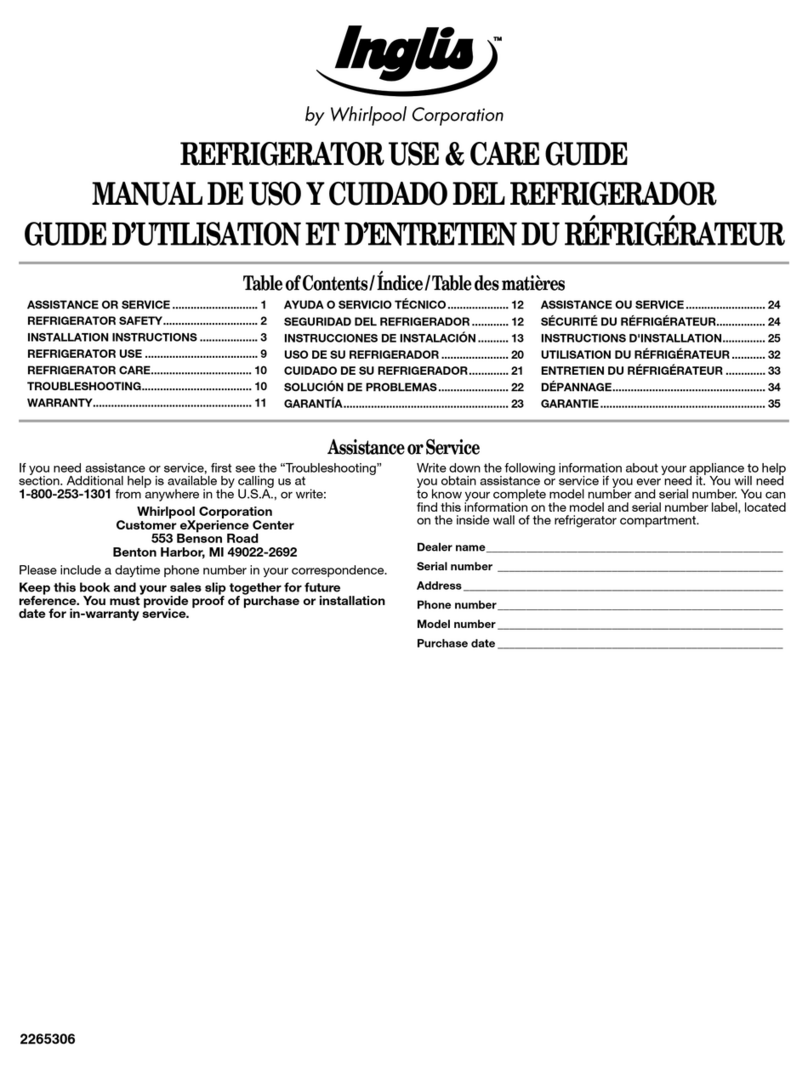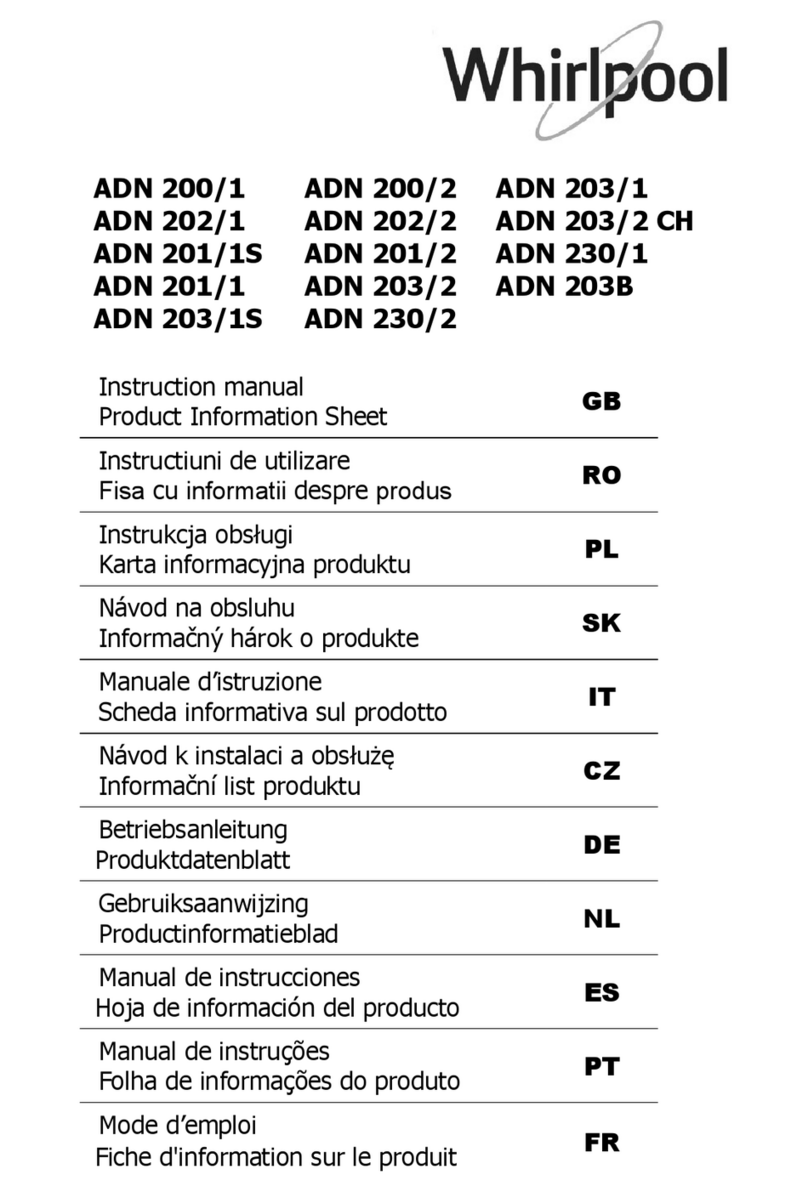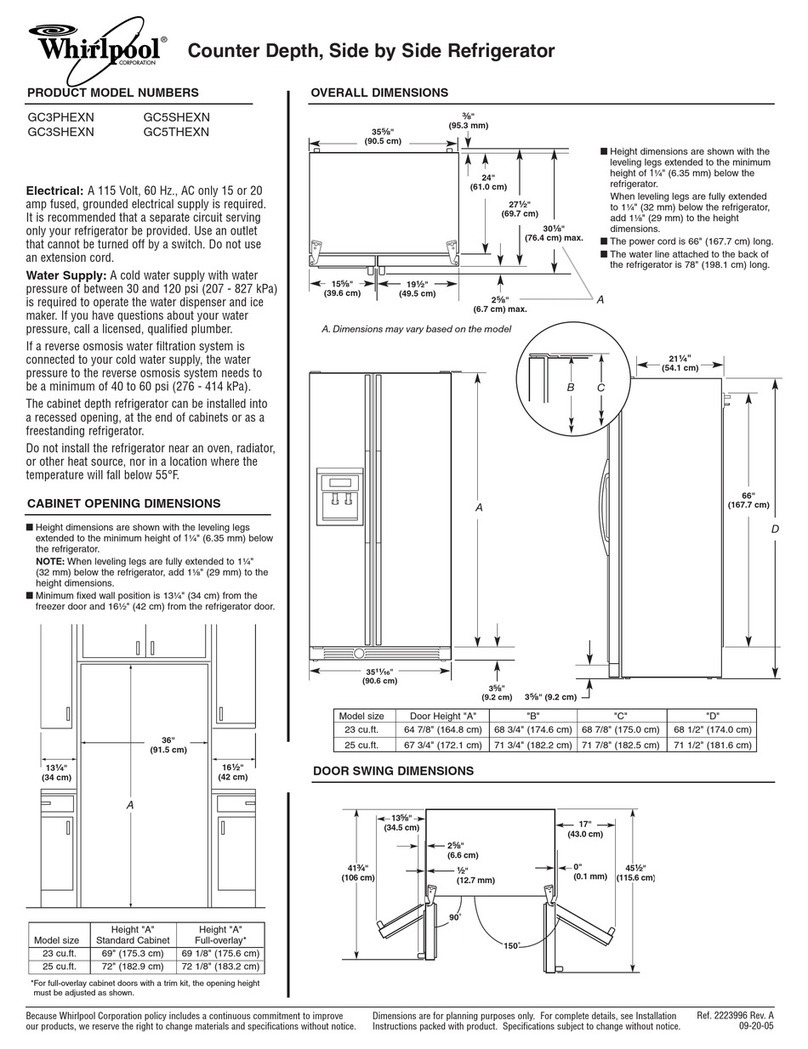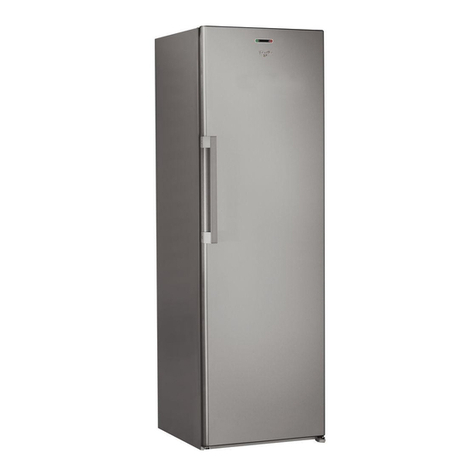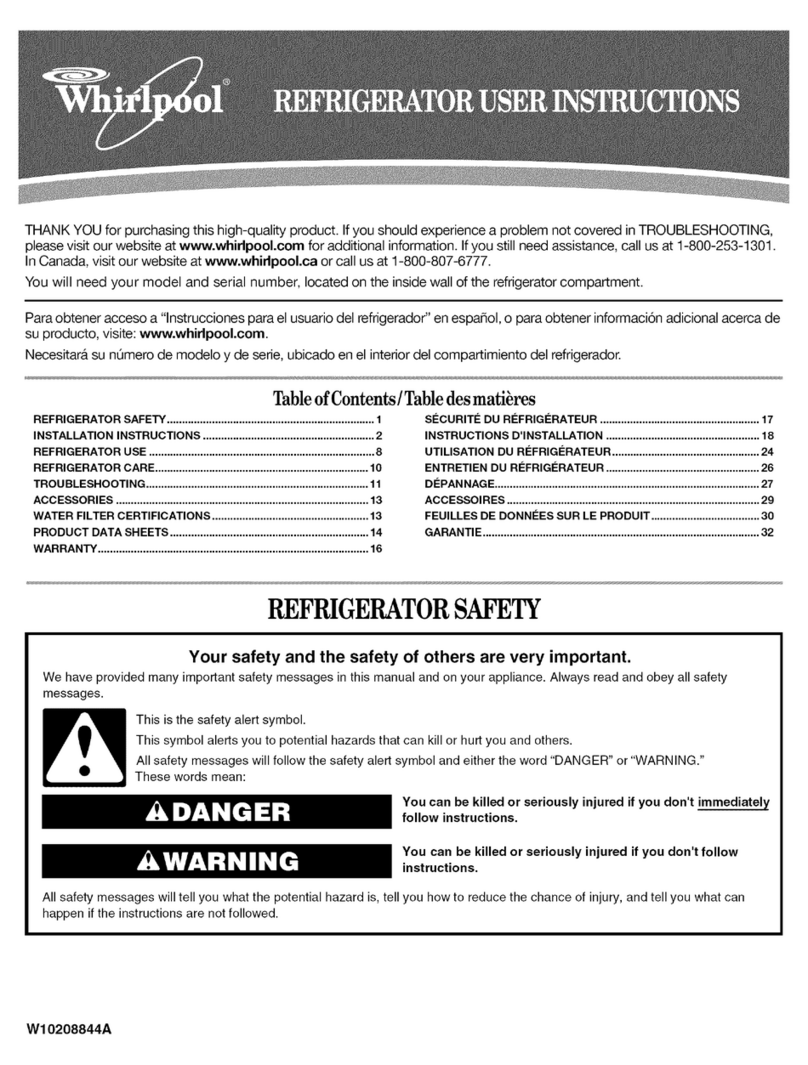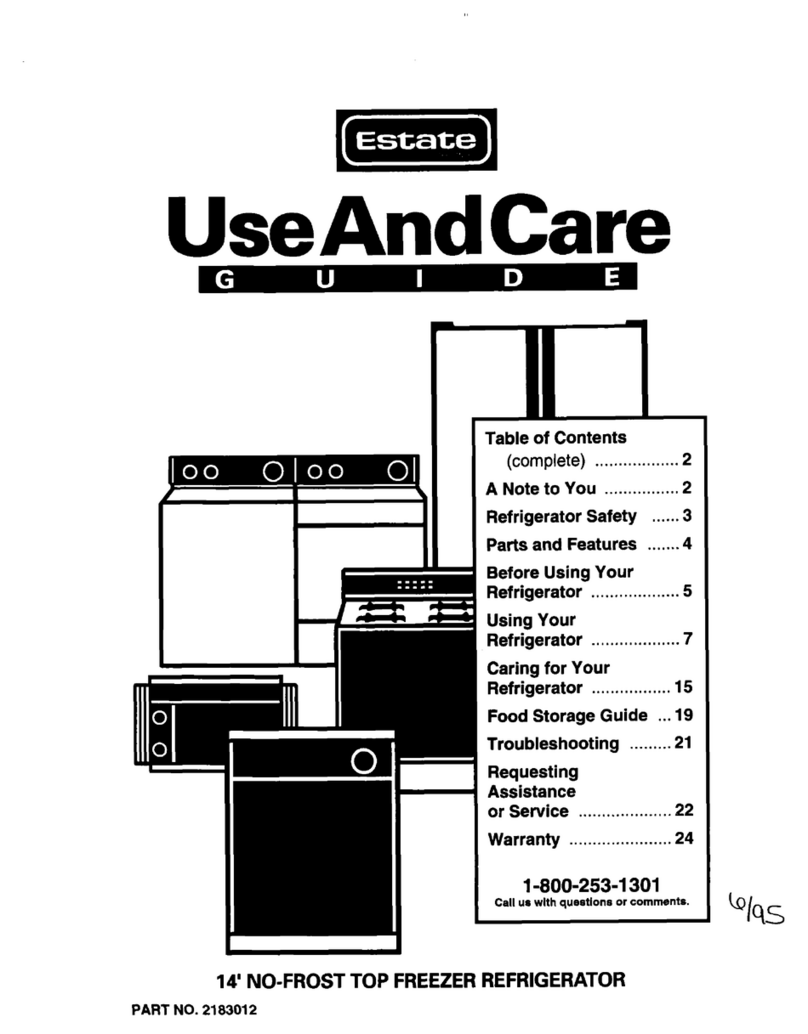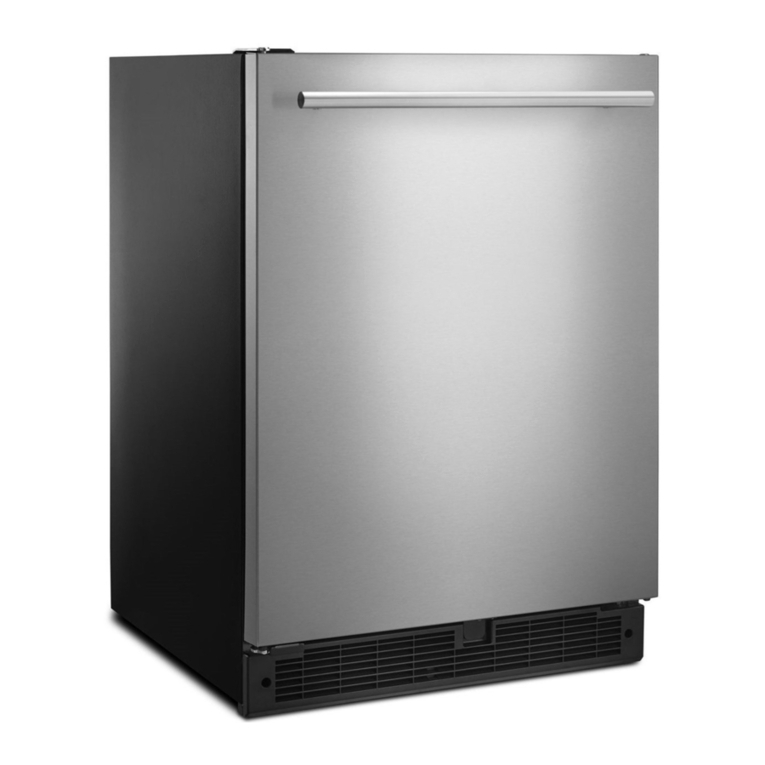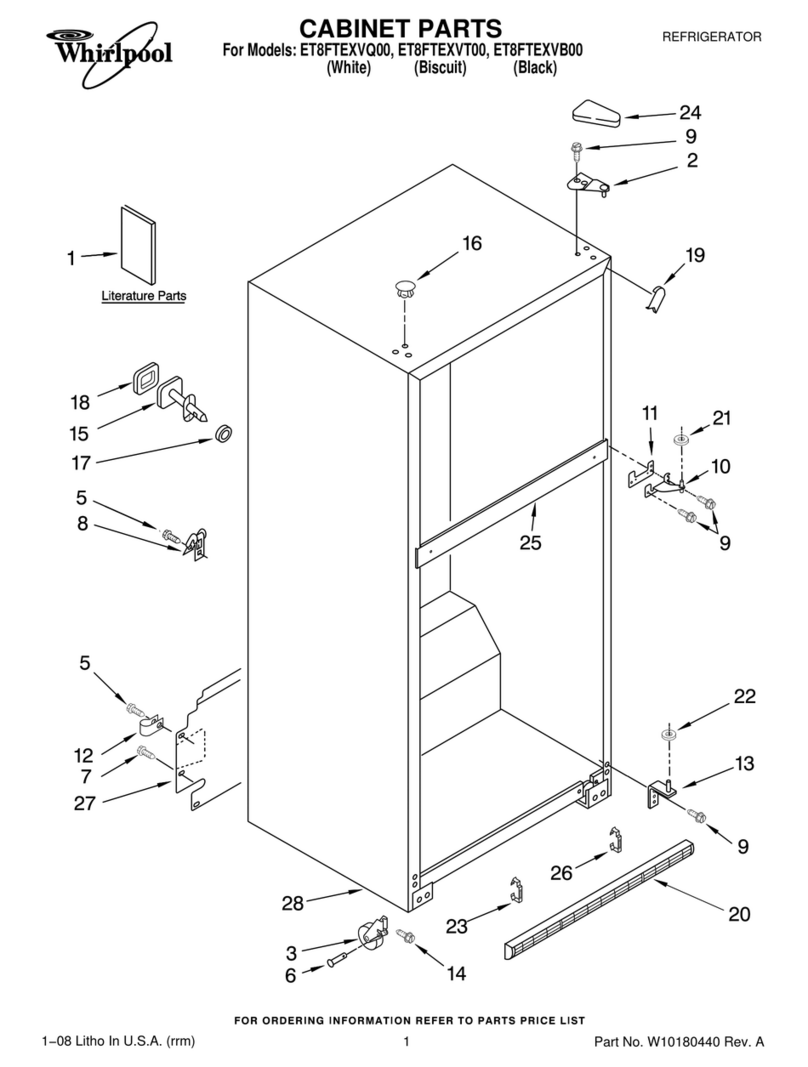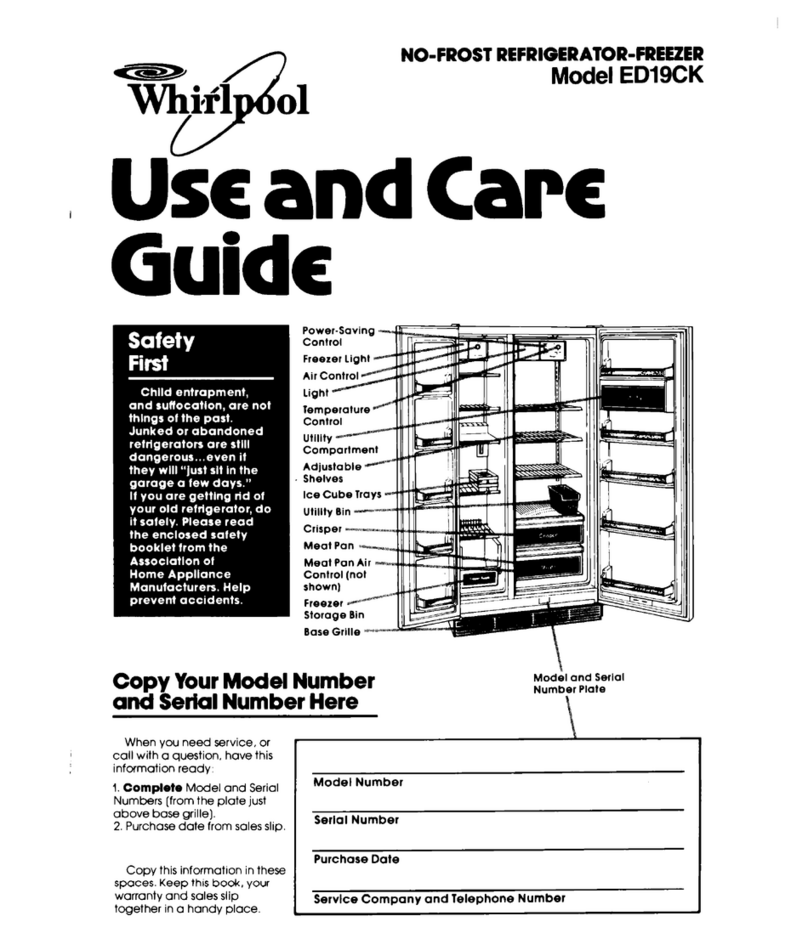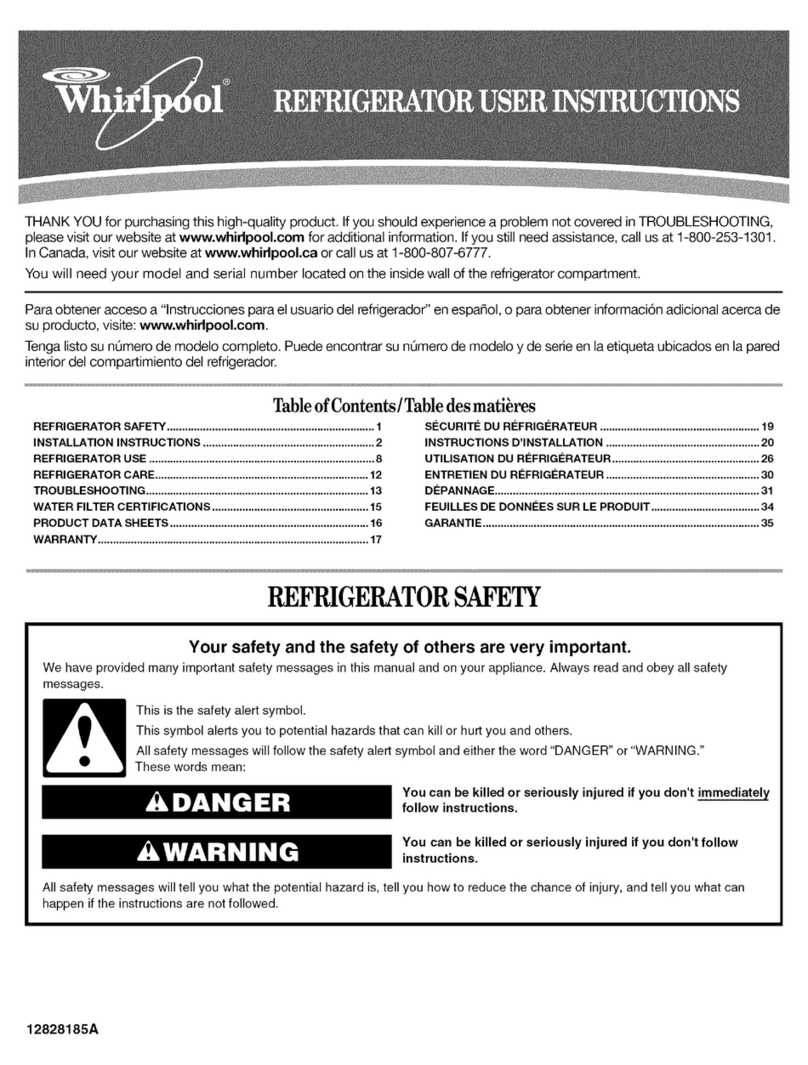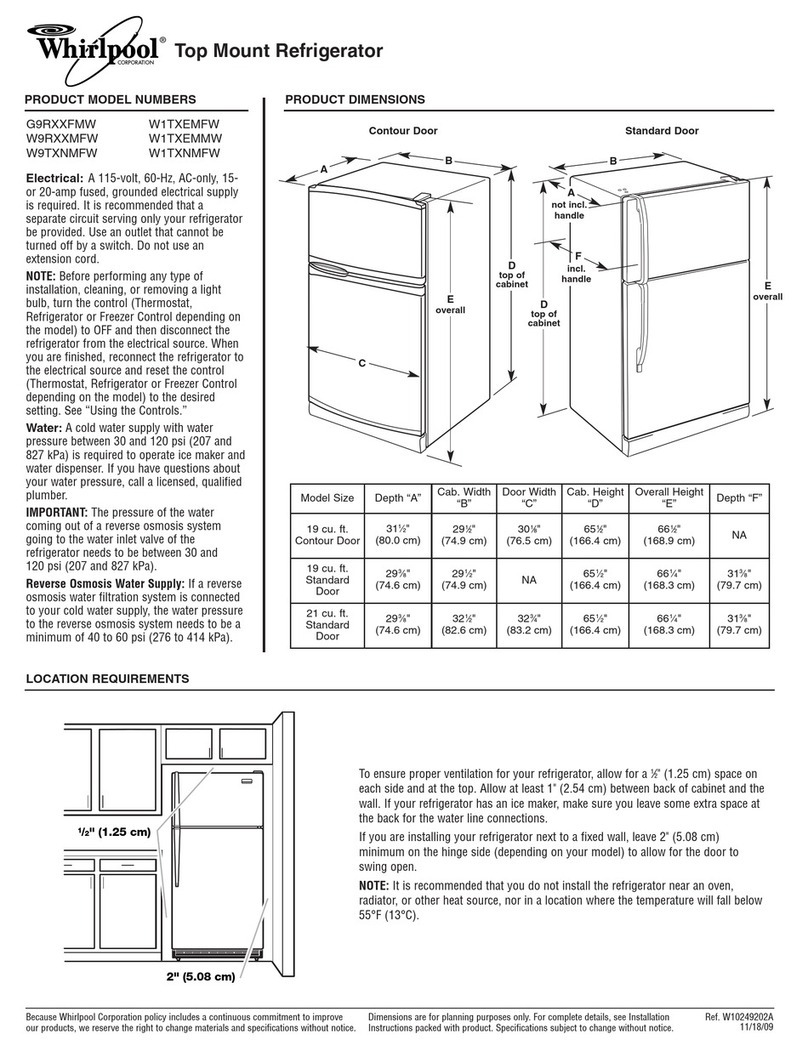Ice compartment door...
Pull the Ice compartment door panel out from the
bottom and slrde it to the rear
Ice cube
trays...
If cubes are not used, they may shrink The mov-
rng cold air starts a slow evaporation. The longer
cubes are stored, the smaller they get.
Optional automatic ice maker...
If you have the automatic ice maker accessory,
or if you plan to add one later [Part No. ECKMF-831,
there are a few things you will want to know,
l
The ON/OFF lever ISa wrre signal arm
Downfor makrng Ice automatrcally
Up. to shut off the ice maker.
DO NOT TURN ICE MAKER ON UNTIL IT IS CON-
NECTED TO THE WATER SUPPLY.
l
The dial or lever on the side of the ice maker
changes the size of the cubes
l
Shake the bin occasionally to keep cubes sepa-
rated, and to obtain Increased storage capacity
l
It ISnormal for ice crescents to be attached by a
corner They will break apart easily
LOWER
SIGNAL
ARM TO
START IT
RAISE
SIGNAL
ARM TO
STOP ICE
To remove ice:
1. Hold tray at both ends
2. Slightly twist
You will hear water running when ice maker is
working. You II hear ice fall into the bin. Don’t let
these sounds bother you.
The ice maker will not operate until the freezer is
cold enough to make ice. This can take
overnight.
Because of new plumbing connections, the first
ice may be discolored or off-flavored. Discard
the first few batches of ice
If ice IS not being made fast enough and more
ice IS needed, turn the Refrigerator Control to-
ward a higher number. Wait a day and, if neces-
sary, turn the Freezer Control toward A.
If you remove the ice bin, raise the signal arm to
shut off the ice maker. When you return the bin,
push it all the way in and lowerthe arm to the ON
position.
If cubes are stored too long, they may develop
an off-flavor...like stale water. Throw them away.
They will be replaced. Cubes in the ice bin can
also become smaller by evaporation.
l
Good water quality is important for good ice
quality. It is not recommended that the ice maker
be connected to a softened water supply. Water
softener chemicals such as salt from a malfunc-
tioning softener can damage the ice maker
mold and lead to poor quality ice. If a softened
water supply cannot be avoided, then it is impor-
tant that the water softener be well maintained
and operating properly.
t
